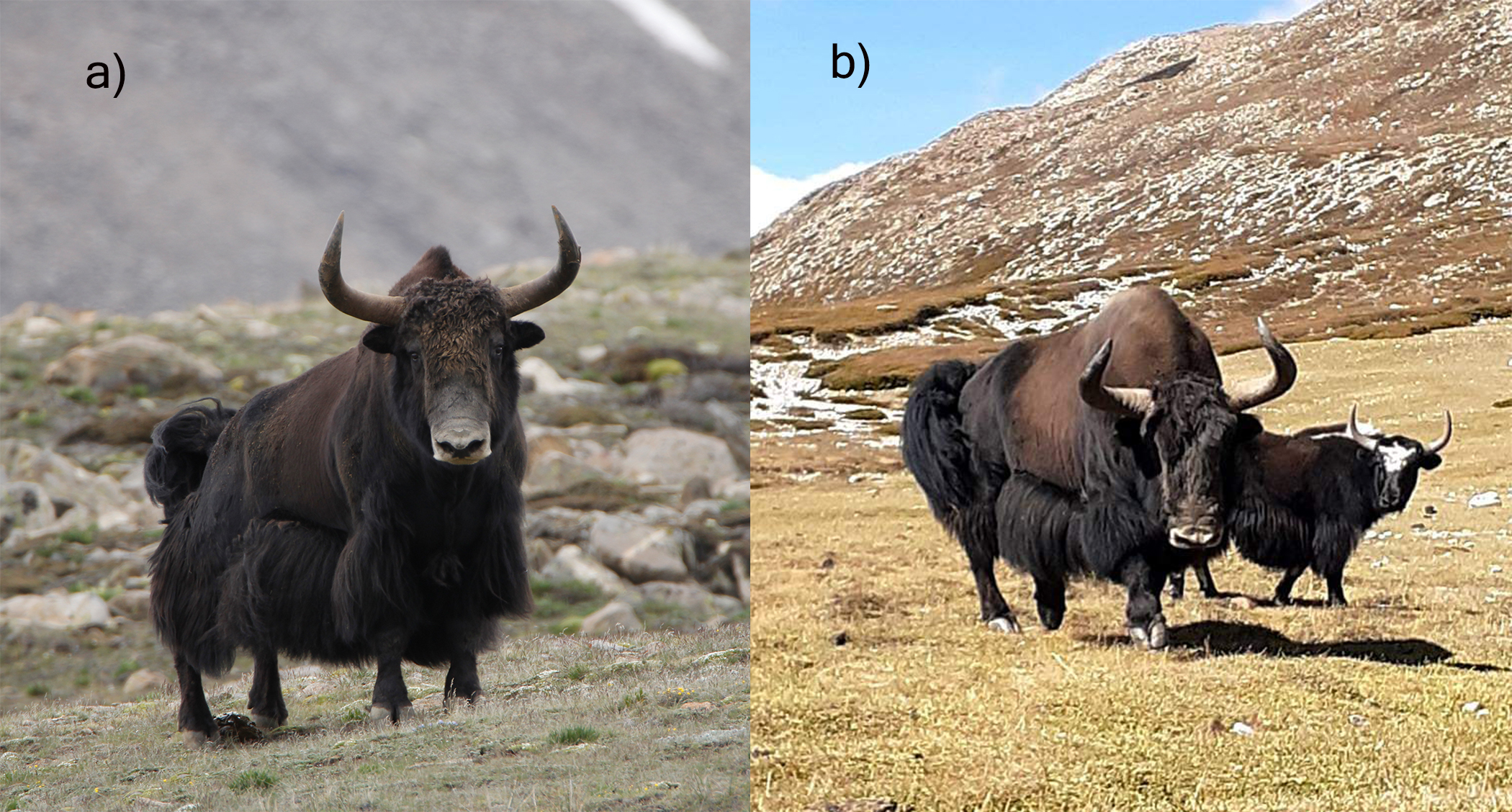News
Yak rediscovery in Nepal
On June 14, 2014, during a research expedition on Himalayan wolves undertaken by the Himalayan Wolves Project (HWP), Geraldine Werhahn (Director, HWP) and Naresh Kusi (Country Program Director, HWP) sighted two live wild yaks (Bos mutus) in Upper Humla, Nepal. The sighting made headlines across the major newspapers of Nepal because the wild yak was believed to be regionally extinct in the country for almost five decades. This finding was published in Mammalia in 2015. However the International Union for Conservation of Nature (IUCN) considered the sighting as uncertain without genetic proof and required additional evidence.
This led Naresh to lead another research expedition in 2017 to collect genetic samples from live individuals and historic specimen of wild and domestic yaks from the Transhimalayan habitats of Upper Humla, Upper Dolpa and Upper Mustang. The study was recently published in Ecology and Evolution and presents phylogenetic and haplotype network analyses of wild and domestic yak samples to reveal that the wild yaks in Upper Humla, Nepal, share the haplotype with wild yaks from the north-western region of the Qinghai-Tibetan Plateau in China. These findings genetically confirm the presence of wild yaks in Nepal.
“We are very excited to provide the missing genetic proof for the IUCN to update the Wild Yak distribution range to include the Transhimalayan regions of northern Nepal. But given their rarity we must assume that very few wild yaks are found in Nepal today. It is an important time for all the conservation stakeholders to act on the ground for the conservation of the species which is critically endangered in the country”, explains Naresh.
Upper Humla is outside the protected area network of Nepal and seems to be the last refuge for wild yaks in the country. “The area needs to be formally protected while ensuring that the stewardship belongs to the local communities and stakeholders to protect the last remaining wild yaks of Nepal. Doing so will also benefit other important wildlife of the area including the Himalayan wolf Canis lupus chanco, snow leopard Panthera uncia, Tibetan wild ass Equus kiang, Tibetan argali Ovis ammon hodgsoni, Tibetan gazelle Procapra picticaudata, among many other species”, adds Geraldine.
Find below some additional resources on Naresh’s earlier works on wild yaks in Nepal:
- The black giants: A short documentary
- Conservation fables
- The helpful dong
- The God in disguise






